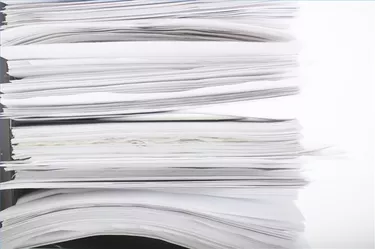
At one point in time, the taxpayer who claimed a person as a dependent under a multiple support agreement used Form 2126 to deduct unreimbursed medical expenses for that dependent from adjusted gross income when completing their tax forms.
Before the 2017 passage of the Tax Cuts and Jobs Act, the MSA allowed one person to claim a dependent exemption even if two or more people provide more than half of the dependent's total support, but no one person provided half of that support. In this way, the MSA associated a medical expense deduction with a dependency exemption.
Video of the Day
Video of the Day
Today, this deduction is no longer available. Consequently, IRS Form 2120 is now used to determine eligibility for the exemption as a determination of who may claim a dependent-related tax credit such as the Credit for Other Dependents. When a person is the subject of a multiple support agreement, no one other than the taxpayer who would be eligible the dependency exemption for a particular tax year is eligible for the tax credit.
What Is a Multiple Support Agreement?
The multiple support agreement, or MSA, is a document that two or more taxpayers who provide the financial support for one dependent sign. The MSA allows multiple taxpayers, each of whom simultaneously supports a dependent, to take turns claiming that dependent on one taxpayer's return for a certain year. The intent of the multiple support agreement is to allow each taxpayer, who contributes to the support of a relative, to claim that person as a dependent and gain the tax benefit of doing so.
A taxpayer can claim a qualifying relative as a dependent if that taxpayer furnishes more than 5o percent of the relative's support during a tax year. The 50 percent threshold may be met by a single person or a number of people who combine their resources to care for a relative. To claim a parent as a dependent, a taxpayer completes both a multiple support agreement and IRS Form 2120.
Consider also: Claiming Dependents for Your Taxes
The MSA Relationship Test
A dependent passes the IRS relationship test if the person is the child, sibling, parent, in-law, niece, nephew, aunt, uncle or any other relative other than the taxpayer's spouse and if the person lives in the taxpayer's household for the entire year. Other relatives, including adopted children, step-parents and foster children, qualify, as do grandchildren, great-grandchildren and so on.
Taxpayer Who Claims the Dependent
One qualified person per tax year may claim the relative as a dependent assuming she submits a multiple support agreement and Form 2120. The family members who support the person may take turns claiming the relative as a dependent each year.
Example of a Multiple Support Agreement
Assume that a sister and brother share equally in their mother's care. As part of this support, the brother and sister pay their mother's medical expenses. The sibling who claims the mother as a dependent under the multiple support agreement for a certain tax year, however, should pay the dependent's expenses for the year because that person is the only sibling who can deduct those payments on her tax return.
Also, the sibling who claims the credit for a certain payment must actually make that payment. This is the case even if the sibling did not pay more than half of her mother's support. If her brother pays half of the medical bill, the sister can claim only half of the bill.
What Is Form 2120?
IRS Form 2120 identifies each taxpayer who paid more than 10 percent of the support of a qualifying relative whom one taxpayer is claiming as a dependent in a certain tax period. Form 2120 affirms that the taxpayer has received signed statements from all other taxpayers who provide support that each one waives the right to claim the person as a dependent.
Before completing Form 2120, the taxpayer should review the following rules that govern a multiple support agreement to ensure she complies with the regulation:
- To qualify as a relative that a family member can claim in regards to a multiple support agreement, a patient must be a relative of the taxpayer and live in the taxpayer's household for an entire year.
- A taxpayer can claim a qualifying relative as a dependent if she and another relative furnish more than 5o percent of the relative's support during a calendar tax year.
- Only one relative claims the individual as a dependent for a tax year.
- The relative who claims the individual for a tax year must furnish more than 10 percent of the dependent's support.
- Each taxpayer who contributes more than 10 percent of the dependent relative's financial support, but who does not claim the dependent for a certain tax year, signs a multiple support agreement that waives the right to claim the dependent for that tax year.
- The taxpayer who will claim the dependent for the tax year will attach IRS Form 2120 to her tax return.